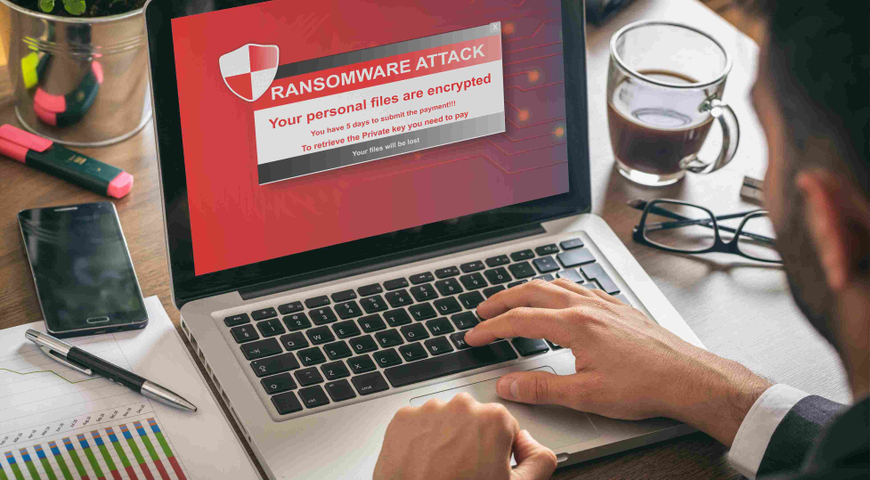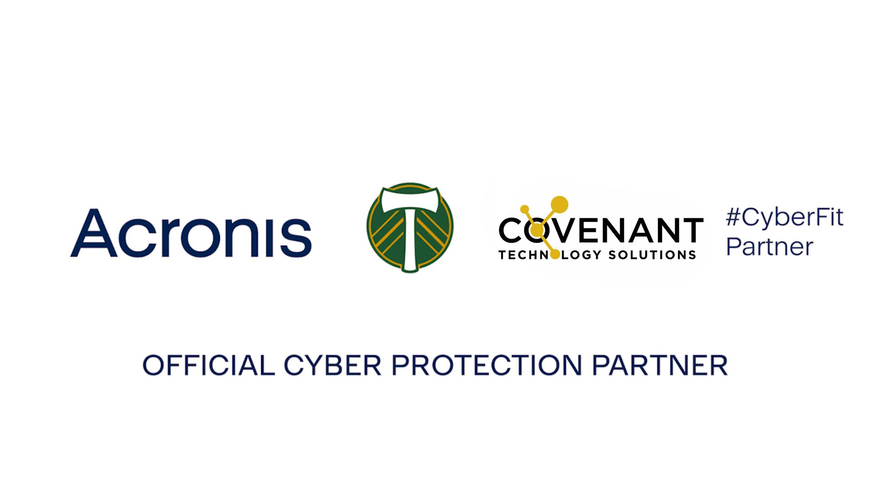
In today's digital age, the threat of ransomware increases day by day, casting a shadow over the safety and security of our personal and professional lives. Ransomware is a type of malicious software designed to extort money by blocking access to your files or devices until a ransom is paid. It works by encrypting your data or locking you out of your device, making it impossible to access your important files, photos, documents and other personal data. The attackers then demand a ransom, usually in cryptocurrency, to restore access.
The rise in ransomware attacks has been alarming, with a significant increase in the number of incidents targeting individuals and small businesses. According to recent reports, ransomware attacks have surged by over 149% in the past year alone. These attacks are no longer only targeting large corporations; they are now a common threat to anyone with a connected device. The consequences of falling victim to ransomware can be devastating — ranging from the loss of irreplaceable personal files to significant financial losses and even identity theft.
Understanding ransomware: What you need to know
Ransomware comes in various forms, each with its own method of attack. Here are the main types you should be aware of:
- Crypto ransomware: This encrypts your files, making them inaccessible. Once your files are encrypted, the attackers will demand a ransom to provide the decryption key or something else to unlock your files. This type of ransomware is particularly dangerous because it can target a wide range of file types, from documents and photos to databases and more.
- Locker ransomware: This locks you out of your device entirely, preventing you from using it until the ransom is paid. This can be especially disruptive if you rely on your device for work or personal tasks.
- Scareware: This kind of ransomware tricks you into thinking your system is infected with malware, pressuring you to pay for fake remove tools. While it may not encrypt your files, it can still cause significant distress and financial loss.
Ransomware typically infiltrates your devices through several common techniques:
- Phishing emails with malicious attachments: They are a popular method for spreading ransomware. These emails often appear to be from a trusted source and contain a malicious attachment or link that, when opened, installs ransomware on your device.
- Infected websites or malicious online ads: Visiting infected websites or clicking on malicious online ads can also lead to ransomware infections. These attacks often exploit vulnerabilities in your browser or other software to install the malware.
- Unpatched software vulnerabilities: Unpatched software vulnerabilities are a goldmine for ransomware attackers. If your operating system, applications or plugins are not up to date, they can be exploited to gain access to your device and install ransomware.
It's important to note that ransomware doesn't just target computers. Smartphones, tables and even smart home devices can be at risk. As more devices become connected, the attack surface for ransomware continues to expand.
The ransomware threat landscape: Today’s protection market
The ransomware threat landscape is more dynamic and dangerous than ever before. Cybercriminals are constantly developing new tactics and more sophisticated ransomware attacks, targeting not only large enterprises but also small businesses and individual users. In today’s market, ransomware protection is a top priority for anyone who values their data and digital security.
Businesses and individuals face a growing array of online threats and malicious threats, from ransomware to other malware that can compromise sensitive information or disrupt operations. The best defense against these evolving threats is a comprehensive set of security measures, including advanced antivirus software, firewalls and regular, secure backups. Security software that can block ransomware and detect other malware is essential for protecting your business and personal data.
Recent industry reports show that the global ransomware protection market is expanding rapidly, driven by the increasing frequency and severity of ransomware attacks. Organizations are investing more in security software and backup solutions to ensure they can block ransomware, recover quickly and minimize the impact of any attack. To stay ahead of these threats, it’s crucial to remain informed about the latest risks and to implement a layered defense strategy that combines prevention, detection and recovery. By doing so, you can protect your business, your files and your peace of mind in an ever-changing threat landscape.
How ransomware infects your devices
Ransomware can infiltrate your devices through a variety of deceptive and malicious methods. One of the most common ways is through phishing attacks, where cybercriminals send emails that appear legitimate but contain malicious attachments or links. Clicking on these links or downloading infected files can introduce ransomware and other malicious software to your computer or network.
Fake websites are another frequent source of ransomware infection. These sites may look like trusted destinations, but are designed to trick users into downloading harmful software. Once installed, ransomware can quickly begin encrypting your files, locking you out of your data and demanding a ransom for the decryption key.
A notorious example is the Wannacry ransomware attack, which spread rapidly across the globe in 2017, infecting millions of devices and causing widespread disruption. This attack exploited vulnerabilities in outdated operating systems, highlighting the importance of keeping your software and security systems up to date.
To protect your computer and files from ransomware, it’s essential to use reliable antivirus software that can detect and block malicious threats before they cause harm. A strong firewall, regular backups and cautious online behavior — such as avoiding suspicious email attachments and steering clear of fake websites — are also key components of a robust security system. If your device does become infected, having secure backups enables you to remove ransomware and restore your files without paying the ransom.
Why traditional antivirus is not enough anymore for online threats
While traditional antivirus software can detect known malware, it struggles against sophisticated, constantly evolving ransomware threats. Legacy antivirus relies on signature-based detection, which means it can only protect against previously identified threats. Zero-day exploits and new ransomware variants often bypass these defenses. Modern programs must have advanced capabilities, such as real-time monitoring and behavioral analysis, to effectively combat ransomware.
To stay protected, you need a proactive, multilayered approach that combines real-time monitoring, behavioral analysis and the ability to recover from attacks by previously created backups. This is where modern ransomware protection programs, like Acronis True Image, come into play, offering enhanced capabilities compared to traditional antivirus.
Key features of modern ransomware protection software
- Real-time threat detection and behavioral analysis: Modern ransomware protection software uses advanced algorithms to detect and block threats in real-time. It monitors your system for suspicious behavior and can quickly identify and neutralize ransomware before it can cause damage. Users receive instant notifications if suspicious activity is detected, allowing for timely awareness and response.
- AI-based threat intelligence and anomaly detection: Artificial intelligence (AI) and machine learning (ML) are critical components of modern cybersecurity. These technologies can detect unknown threats by analyzing patterns and anomalies in your system’s behavior, providing a layer of protection that traditional antivirus cannot.
- Backup and recovery from unauthorized changes: In the event of an attack, the ability to roll back to a previously uninfected state is crucial. Modern ransomware protection software can automatically recover your files and system from unauthorized changes, ensuring that you can quickly regain access to your data.
The usage of modern ransomware protection software is designed to be user-friendly, making it easy to set up, navigate and manage security features for optimal protection.
Acronis’ integrated approach to ransomware protection
Acronis features an integrated approach to complete cyber protection against ransomware and data loss. Acronis True Image is a comprehensive solution that combines anti-malware, backup, recovery and cybersecurity in one powerful package.
Acronis True Image is designed to protect your digital life from the ground up. It offers real-time threat detection, behavioral analysis, and automatic recovery, ensuring that your data remains secure and accessible. Additionally, it provides robust backup functionality, allowing you to store multiple versions of your files in a secure, encrypted environment, such as the Acronis Cloud. As the developer of True Image, Acronis is recognized for its commitment to customer support and continuous security improvements, enhancing the reliability of its product.
How Acronis prevents, detects and recovers from ransomware
Acronis True Image uses a multilayered approach to protect you from ransomware:
- Prevention: Acronis True Image actively blocks known and unknown threats using AI and machine learning.
- Detection: It continuously monitors your system for suspicious activity and alerts you to potential threats.
- Recovery: In the event of an attack, Acronis True Image can automatically restore your files and system to a previous, uninfected state.
Backup is your best defense against ransomware infection
One of the most effective ways to recover from a ransomware attack is to have secure, versioned backups of your personal data, such as your files, photos, videos and documents. A comprehensive course of action against ransomware includes secure backups, regular updates and proactive monitoring to ensure all aspects of your digital security are covered. This means that you have multiple copies of your files, each from a different point in time, stored in a safe location. If your files are encrypted, you can simply restore them from a backup, avoiding the need to pay a ransom.
Local vs. cloud backup strategies
You can choose between local and cloud backup strategies, or even a combination of both. Local backups are stored on an external hard drive or network-attached storage (NAS) device, while cloud backups are stored on remote servers. Both have their advantages:
- Local backups: Faster restoration and no internet dependency.
- Cloud backups: High security, automatic updates and accessibility from anywhere and from your mobile device.
How Acronis True Image automatically protects backups from being encrypted
Acronis True Image lets you encrypt your created backups and stores them securely in the Acronis Cloud. It also uses advanced techniques to prevent backups from being encrypted by ransomware, giving you a reliable fallback in case of an attack.
Stop ransomware before it locks your files
With Acronis True Image Advanced and Premium, you get automatically built-in protection against ransomware and malware. It uses Acronis Active Protection technology, which is a cutting-edge technology that monitors your system for malicious behavior in real time. It can detect and block encryption attempts, preventing ransomware from locking your files. This technology is particularly effective against zero-day threats and new variants of ransomware.
Acronis Active Protection uses a combination of AI and behavioral analysis to identify and neutralize threats. It continuously monitors your system for unusual activities, such as rapid file encryption, and can automatically block the process and alert you to the threat.
AI and machine learning: The smart way to stop evolving threats
AI and machine learning are essential in modern cybersecurity because they can adapt to new and evolving threats. Traditional antivirus software relies on a database of known malware signatures, which can be easily bypassed by sophisticated ransomware. AI, on the other hand, can detect and respond to unknown threats based on their behavior and patterns.
Acronis True Image uses machine learning algorithms to analyze your system's behavior and identify potential threats. It can detect new ransomware variants and other unknown malware by recognizing patterns that are indicative of malicious activity. This continuous learning and improvement ensure that you are always protected against the latest threats.
Acronis is committed to staying ahead of the curve. It regularly updates its threat intelligence and machine learning models to ensure that you are protected against the latest ransomware attacks. These updates are applied in the background, so you don’t have to worry about manually updating your software.
Protecting your personal data and identity
Ransomware attacks can have far-reaching consequences beyond just locking your files. If your personal data is compromised, it can lead to data breaches and identity theft. Attackers may use your sensitive information to commit fraud or sell it on the dark web.
Acronis True Image helps you secure your identity to ensure that your data is safe and accessible only to you. Identity Theft is available for customers in U.S. with an Advanced or Premium subscription. Learn more on our Identity Protection page.
Encrypted cloud storage is a critical component of modern cybersecurity. As it provides an additional layer of security by encrypting your personal cherished data when you transfer it to the cloud and when it is saved in the cloud. Acronis True Image offers the possibility to encrypt your backups, giving you peace of mind that your data is protected up to 5TB, depending on the plan.
Secure your mobile and remote devices
Mobile devices and laptops are increasingly targeted by ransomware attackers. These devices often have weaker security measures and could be more vulnerable to attacks. Whether you’re using a Windows, Mac, Android or iOS device, you need comprehensive protection.
With Acronis Mobile for Android and iOS, you can access your created backups that are uploaded to the Acronis Cloud, which means you can always access your cherished files wherever you are through the Acronis dashboard.
Comparing Acronis to other ransomware protection tools
When it comes to ransomware protection, there’s a variety of options to choose from, and Acronis True Image stands out from the competition. See below why:
- Bitdefender: While Bitdefender offers strong antivirus protection, it lacks the integrated backup and recovery features Acronis True Image seamlessly offers.
- Norton: Norton is known for its comprehensive security suite, but it could be complex to set up and manage everything.
- McAfee: McAfee provides solid protection but is often criticized for its resource-heavy nature and frequent false positives. Which makes it sometimes hard to work with.
- Windows Defender: Windows Defender is a built-in solution that offers basic protection, but it may not be enough to defend against sophisticated ransomware attacks.
While some competitors offer free ransomware protection tools or decryption utilities, Acronis focuses on providing a comprehensive paid solution.
Acronis True Image offers the most comprehensive protection as it includes not only real-time protection, but it also includes reliable backup, recovery, and identity protection*. To make sure you always can fall back when something happens — and as we know things happen. You can get plans for one, three, or five devices. There are three different plans of Acronis True Image:
- Essentials: Best for users who need flexible backups, active disk cloning, recovery and ransomware protection. Phone, email and chat support are included as well in the Essentials plan — from $49.99 per year.
- Advanced: Best for users who need real-time protection against malware, URL filtering, Identity Protection* and cloud storage up to 500GB — from $578.99 per year.
- Premium: Best for users who need the highest level of protection and features. It includes all the features of the Advanced plan, priority support, Acronis ASign and Acronis Notary and cloud storage up to 5TB — from $124.99 per year.
Acronis also provides specialized services for ransomware response and recovery, supporting users in case of an incident.
To decide which plan is the best for you, consider your specific needs and the number of devices you want to protect. If you have a single device and basic protection is sufficient, the Essential plan may be the best choice. For users with multiple devices and a need for enhanced security, the Advanced plan is a good option. If you require the highest level of protection and more cloud storage, the Premium plan is the way to go.
Here you can find a detailed comparison between the different plans of Acronis True Image here.
Security software for freelancers, creators and remote professionals
Freelancers, creators and remote professionals are frequent targets of ransomware attacks because they often work with sensitive data and may not have the same level of IT support as larger organizations. Protecting your work files, videos and photos is crucial to maintaining your livelihood.
Acronis True Image offers robust solutions for protecting your work files, videos and photos. It provides secure, versioned backups and real-time protection, ensuring that your created data remains safe and accessible. For photographers, Acronis offers specialized features to protect and manage large media files, which can be particularly valuable.
Cloud backup and secure file sharing are essential for remote professionals. Acronis True Image empowers you to store your backups in the cloud, ensuring that your data is always accessible and secure. It also provides secure file sharing options, making it easy to collaborate with others without compromising your security.
How to install and set up Acronis ransomware protection
Before installing Acronis True Image, you need to ensure that you have
- Administrator access: Log in using an account with administrative privileges.
- System requirements: Verify your system meets the minimum requirements for Acronis True Image (User Guide).
- Supported operating systems: Verify whether the Acronis True Image is supported on your operating system.
- Windows: Windows 11 (all editions), Windows 10 (all editions), Windows 8+ (all editions) and Windows 7 SP1 (all editions).
- Mac: macOS Sequoia 15, macOS Sonoma14, macOS Ventura13, macOS Monterey12, macOS Big Sur 11.
- Android: Android 10 or later.
- iOS: iOS 15 or later.
- Download the installation file from your Acronis account or the purchase confirmation email. Use the latest available build of the product.
- Uninstall older versions of Acronis True Image:
- If upgrading from two direct, previous versions of Acronis True Image, the new version will update the existing one automatically.
- For older versions, uninstall them before installing Acronis True Image.
- Update your system: Ensure that all Windows updates are installed.
- Close applications that are currently running: Save your work and close all open applications for a smooth installation.
- Disable antivirus temporarily: Deactivate antivirus software to avoid conflicts during installation. Remember to reenable it after completing the installation.
- Restart your system: If you recently installed updates or applications, reboot your system before beginning the installation.
Installation procedure:
- Double click on the installation file to run it. The product checks for available updates and offers to download a newer version if it is available. If no new version is found, select the installation mode:
2. Click Install for the default installation.
3. Click Custom installation to choose the required components:
- Backup and core protection. For more information, refer to backing up data.
- Anti-ransomware protection, cryptomining detection, and videoconference protection. For more information, refer to Active Protection.
- Real-time protection, Antivirus scan and Web filtering. For more information, refer to Active Protection and antivirus scans.
- By default, Try&Decide is not installed on your computer. For more information, refer to Compatibility with Memory Integrity feature.
4. The product will then be installed on your system partition (usually C:).
5. Reboot may be required to finalize the installation. After installation, you will need to activate your copy of the product: see Acronis True Image: How to activate license.
6. Open Acronis True Image and navigate to the Protection tab and make sure that Active Protection is enabled.
7. Set up your backups and configure your backup settings to ensure that your data is protected.
Keeping your defenses updated: Block ransomware with Acronis
Regular updates and patches are crucial for maintaining your security. They ensure that your software is equipped to handle the latest threats and vulnerabilities. Acronis True Image handles these updates in the background, so you don’t have to worry about manually installing them.
Acronis True Image automatically checks for updates at startup, and you will be notified when there are updates available to be installed. This ensures that your protection is always up to date and that you are protected against the latest threats. Real-time improvements are also made to the AI and machine learning models, enhancing your security over time.
Acronis offers flexible subscription options to suit your needs. Renewal reminders will be sent to you to ensure that your protection remains active. Managing your subscription is easy through the Acronis dashboard.
Conclusion: Ransomware isn’t going away — but you can stay ahead
Ransomware is a persistent and evolving threat, and it’s not going away anytime soon. However, with the right tools and strategies, you can stay ahead of the attackers and protect your digital life. Acronis True Image is a smart investment for anyone who values their personal data and wants to ensure that they are protected against the latest ransomware threats.
What you get with Acronis True Image:
- Comprehensive protection: Acronis True Image combines anti-malware, backup, cybersecurity, recovery, and identity protection* in one solution.
- Advanced AI and machine learning: It uses cutting-edge technology to detect and block threats, even those which are unknown.
- Automatic backups and recovery: In the event of an attack, you have the possibility to restore your files or system without the hassle.
- User-friendly interface: Easily manage your protection with Acronis True Image and manage your protection settings.
Frequently asked questions (FAQs)
Does Acronis True Image protect against all types of ransomware?
Acronis True Image is designed to protect against a wide range of ransomware threats, including crypto ransomware, locker ransomware and scareware. It uses advanced AI and machine learning to detect and block both known and unknown variants of ransomware. While no solution can guarantee 100% protection against every possible threat, Acronis True Image provides comprehensive and proactive defense, significantly reducing the risk of a successful ransomware attack.
Can I recover files encrypted by ransomware with Acronis?
Yes, Acronis True Image includes robust backup and recovery features. If your files are encrypted by ransomware, you can use the software to restore them from a secure, versioned backup. Acronis True Image automatically protects your backups from being encrypted, ensuring that you have a reliable fallback in case of an attack.
What devices and operating systems does Acronis anti ransomware support?
Acronis True Image supports a variety of devices and operating systems, making it a versatile solution for all your digital needs. It is compatible with:
- Windows: Windows 11 (all editions), Windows 10 (all editions), Windows 8+ (all editions) and Windows 7 SP1 (all editions).
- Mac: macOS Sequoia 15, macOS Sonoma14, macOS Ventura13, macOS Monterey12, macOS Big Sur 11.
How does Acronis compare to standalone antivirus software?
Acronis True Image offers a more comprehensive and integrated approach to cybersecurity compared to standalone antivirus software. While traditional antivirus software primarily focuses on detecting and removing known malware, Acronis combines real-time threat detection, behavioral analysis and automatic recovery with secure backup and Identity Protection. This multilayered approach provides better protection against sophisticated ransomware threats, which often bypass traditional signature-based detection. Acronis also leverages AI and machine learning to stay ahead of evolving threats, making it a more advanced and effective solution.
Can I use Acronis without technical knowledge?
Yes, Acronis True Image is designed to be user friendly and accessible to users with varying levels of technical knowledge. The installation process is straightforward, and the dashboard provides a simple interface for managing your protection settings, viewing security reports and restoring files. Acronis also offers detailed guides and customer support to help you set up and use the software effectively. Whether you’re a tech-savvy user or a beginner, Acronis True Image can provide the protection you need.
Is cloud backup included in the Essential plan?
The Essential plan does not include cloud backup. If you want to back up to the cloud, you will need to choose the Advanced or Premium plan. With these plans, we offer cloud storage from 50GB up to 5TB for one, three or five computers.
The most reliable and efficient AI-based cyber protection.
About Acronis
A Swiss company founded in Singapore in 2003, Acronis has 15 offices worldwide and employees in 50+ countries. Acronis Cyber Protect Cloud is available in 26 languages in 150 countries and is used by over 21,000 service providers to protect over 750,000 businesses.


